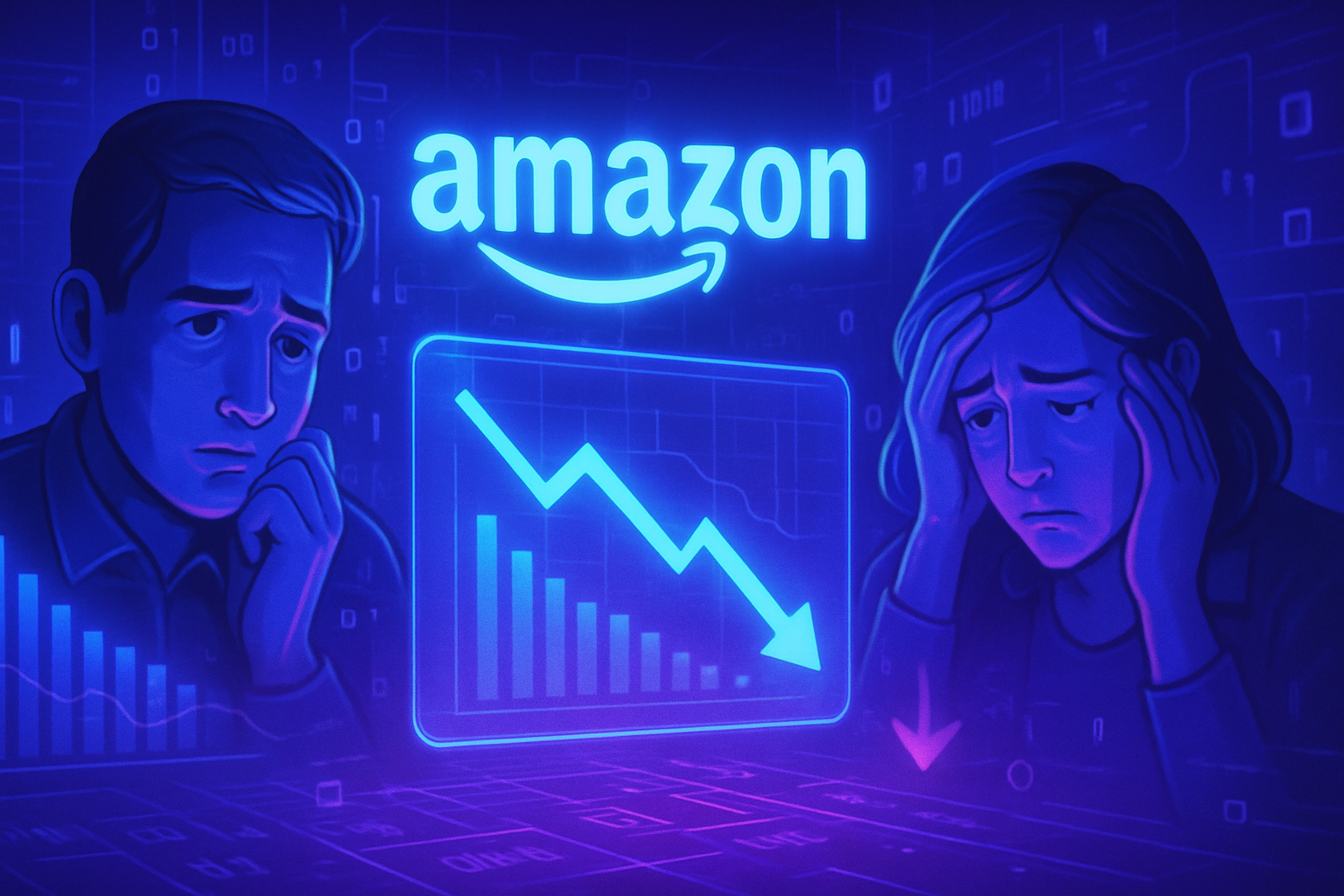Amazon is facing significant concerns regarding its financial forecasts, a topic of intense speculation in the markets. The company’s recent statements raise questions about the impact of Donald Trump’s tariffs on its e-commerce business. After positive quarterly results, the investors’ reaction reflects a growing distrust amid uncertainty. Amazon’s ability to overcome these challenges remains debated, especially amidst the race for artificial intelligence.
Amazon’s Financial Performance
When releasing its financial results for the second quarter, Amazon announced a revenue of $167.7 billion, marking an increase of 13.3% compared to the previous year. This performance surpassed analysts’ expectations, who anticipated revenue of around $162 billion with a growth of 9%. The cloud services division, Amazon Web Services, also experienced notable growth with sales reaching $30.9 billion, showing an increase of 17.5%.
Concerns About Tariffs
Despite these encouraging results, concerns about the impact of tariffs imposed by the Trump administration continue to erode investors’ confidence in Amazon. Analysts argue that these tariff measures could have negative consequences for e-commerce when the company’s dependence on international sellers is taken into account. The recent criticisms of the administration towards Amazon have heightened suspicions about its ability to navigate an uncertain business climate.
Market Reaction and Future Forecasts
Amazon’s financial results have not eased investors’ fears. In after-hours trading following the earnings announcement, the company’s stock dropped by more than 3%. This decline comes after a challenging first quarter, where a drop in stock values was attributed to tariff concerns. Prior to this announcement, the stock had recorded a gain of about 6% since the beginning of the year, despite market turmoil.
Investments in Artificial Intelligence
At the heart of economic concerns, Amazon is ramping up its investments in artificial intelligence. The company plans to inject up to $100 billion by 2025 to enhance its AI capabilities. The CEO, Andy Jassy, highlighted the increasing integration of AI services into Amazon’s products, aiming to improve customer experience and future product generations.
Strategic Partnerships
In its quest for dominance in the AI sector, Amazon has forged a partnership with Anthropic, a promising startup in this field. This collaboration has allowed Amazon to bolster its stature in the AI market. The e-commerce giant has already invested $8 billion in this company and may consider further multi-billion investments in the near future.
Significant Agreements
Earlier this year, Amazon also concluded an agreement with The New York Times to use some of their content for AI training purposes. This partnership could see Amazon spending between $20 million and $25 million per year for licensing rights. This type of agreement underscores Amazon’s strategy to enhance its tools, such as Alexa, by feeding its AI capabilities.
Impact on Investor Perception
The mixed reaction of investors to Amazon’s latest results illustrates growing confusion about the company’s future direction. The uncertainties related to tariffs and dependence on international sellers raise questions about the stability of its business model. Markets are closely monitoring how Amazon will manage these challenges while continuing to invest heavily in technology and AI. Uncertain economies have not only impacted its results but also affect the stock outlook and overall brand confidence.
Common Questions about Amazon’s Tariff Concerns and Financial Forecasts
What are the impacts of Donald Trump’s tariffs on Amazon?
The tariffs imposed by the Trump administration have raised concerns about their impact on Amazon’s import costs, which could affect its profitability, especially given its dependence on international sellers.
How has Amazon responded to concerns regarding its financial forecasts?
Amazon announced financial results that exceeded expectations in terms of revenue but also indicated that it might not meet its operating revenue forecasts, which raised concerns among investors.
What are the revenue forecasts for Amazon in 2023 in the context of tariffs?
Amazon previously estimated revenue of around $162 billion for the second quarter, but concerns about tariffs have led to more cautious forecasts, estimating operating revenue between $15.5 billion and $20.5 billion.
Why did Amazon’s stock drop despite encouraging financial results?
The drop of over 3% in Amazon’s stock after the earnings announcement is primarily due to a loss of investor confidence regarding the potential long-term impact of tariffs on the company’s profitability.
What measures is Amazon taking to offset the effects of tariffs?
Amazon is investing heavily in technological infrastructure and strategic partnerships, including in artificial intelligence, to improve its operational efficiency and reduce long-term costs.
How can investors interpret Amazon’s current strategy in light of tariffs?
Investors should consider Amazon’s investments in AI and the strength of its long-term revenue, while remaining vigilant about the potential impact of tariffs on its profit margins.
Does Amazon plan to raise its prices due to tariff concerns?
While price increases have been mentioned previously, Amazon has not yet implemented such increases significantly on its platform, raising questions about its future pricing strategy.
What is analysts’ opinion on Amazon’s future growth amid tariff uncertainties?
Several analysts express reservations about Amazon’s growth due to economic uncertainty and tariffs, while acknowledging that the company remains well-positioned thanks to its cloud services and ongoing innovations.






